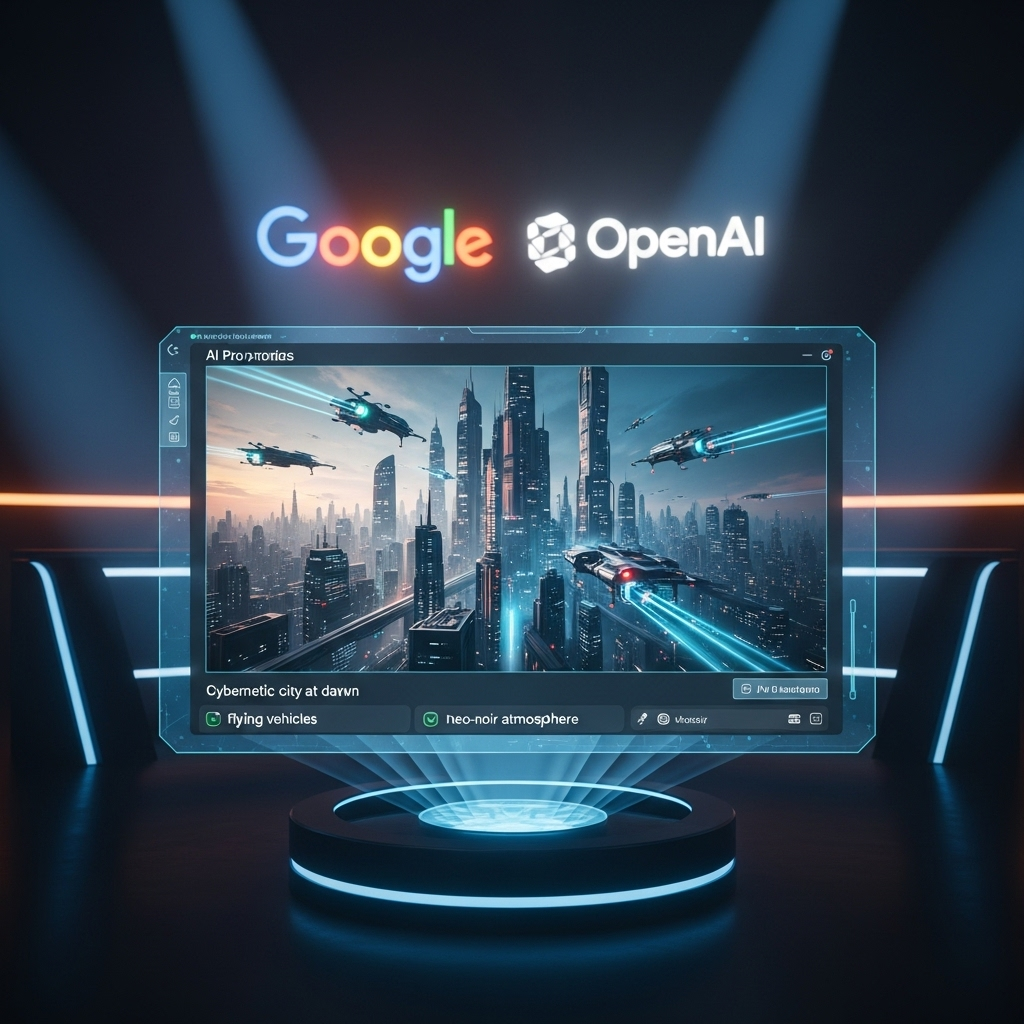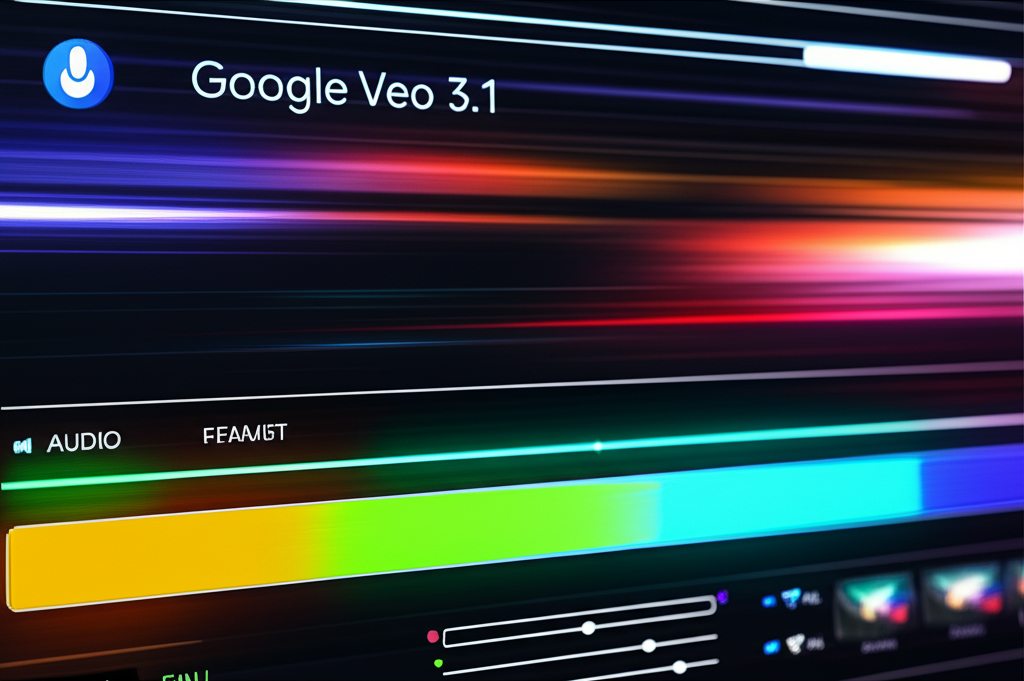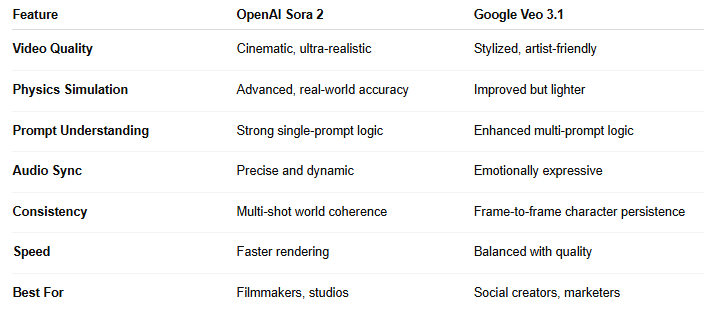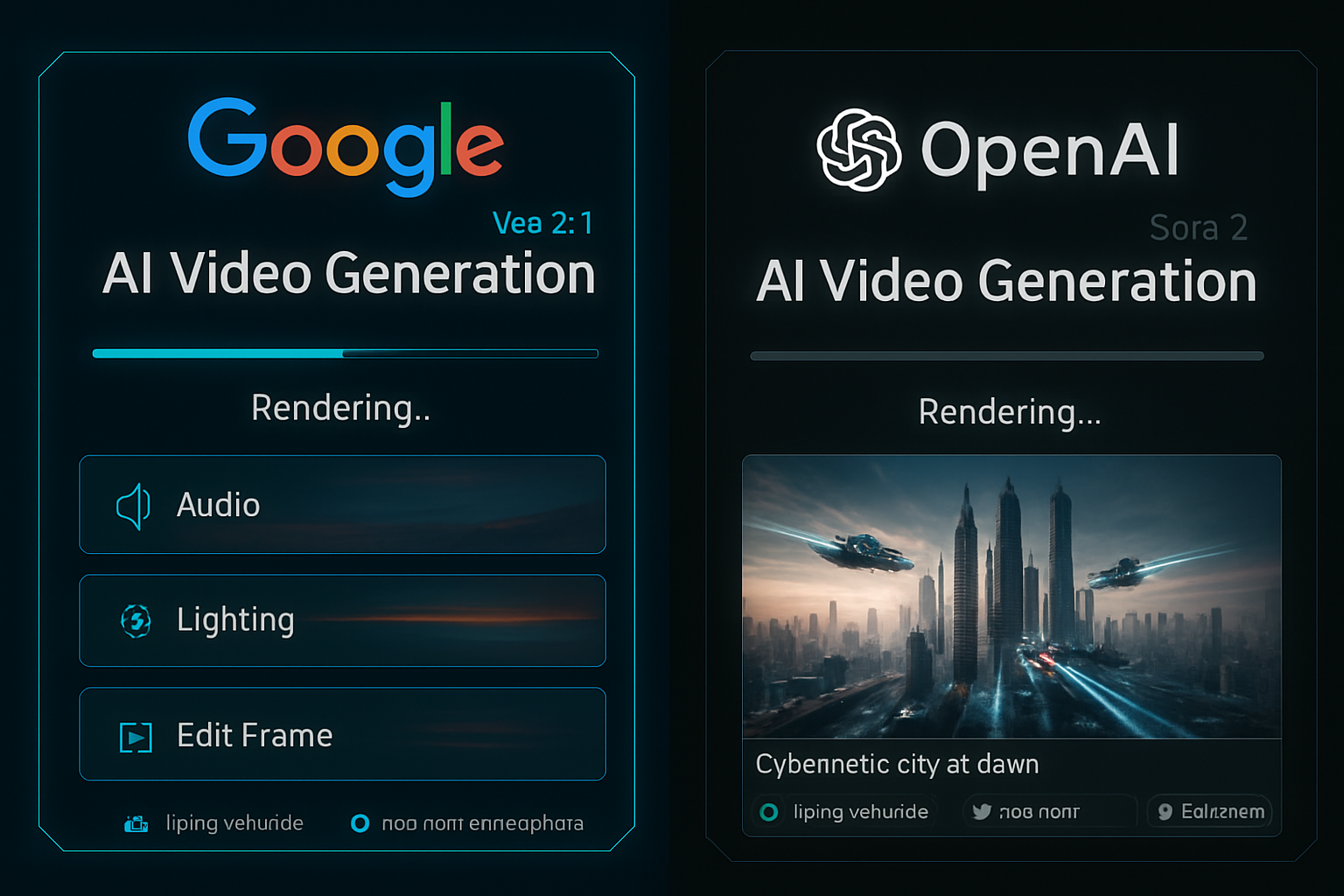Rhyno Hu
October 14, 2025
5 min
Rhyno Hu
October 14, 2025
5 min
Can Google’s next big update, Veo 3.1, really stand up to OpenAI’s Sora 2 in the fast-moving world of AI video generation? With creators demanding sharper visuals, smoother motion, and faster rendering, the competition between Google and OpenAI is about to heat up once again. Early hints suggest that Veo 3.1 will take everything users loved about Veo 3—like its text-to-video creativity and audio generation—and polish it into a smarter, faster, and more cinematic experience.
In this blog, you’ll discover everything worth knowing about Google Veo 3.1—its expected features, potential release date, and how it stacks up against Sora 2. By the end, you’ll have a clear picture of what makes Veo 3.1 one of the most anticipated AI upgrades of 2025 and why it could change how creators make videos forever.

Google Veo is an AI-powered video generator developed to convert text and images into dynamic, high-quality videos. It was built to help creators make visually engaging content faster and easier.
Veo interprets text descriptions, reference images, or both, to produce clips that match the user’s creative vision. Its purpose is simple: let creators focus on imagination while AI handles animation, camera movement, and styling.
To generate professional videos from text or images.
To support creators with minimal editing skills.
To speed up production for marketing and social media use.
When Google introduced Veo 3, it positioned the model as a bridge between AI art and video storytelling.
Veo 3 took the AI community by surprise. It wasn’t just another video tool—it was Google’s entry into AI-driven creativity.
Native Audio Generation: It could generate voice, ambient sound, and background music directly inside the model.
Prompt Understanding: It handled multi-step prompts with accuracy, even when users asked for creative combinations.
Camera Control: It simulated pans, zooms, and angles to make clips feel cinematic.
Character Consistency: With a reference image, Veo 3 maintained the same face or character throughout multiple scenes.
Object Manipulation: Users could add, remove, or move items in the video seamlessly.
These features helped content creators produce viral clips, ad visuals, and storytelling sequences with minimal technical effort.
Veo 3 wasn’t perfect—it had limits in realism and sometimes struggled with complex lighting—but it set the stage for Google’s next upgrade.
Google Veo 3.1 isn’t a complete overhaul—it’s an optimization. It refines Veo 3’s strengths and fills in its gaps. Based on early insights, here’s what users can expect:
The new Veo 3.1 will likely deliver expressive sound design. Voices may include emotional tones, matching facial expressions or scene intensity. Music and background effects will blend more naturally with visuals, creating immersive storytelling.
Expect major improvements in lighting, shadow behavior, and object motion. Textures will look smoother, and motion will follow real-world physics. This could help Veo 3.1 compete with Sora 2’s advanced physics simulation.
Veo 3.1 will likely refine its ability to maintain character and style consistency across scenes. This includes small details like hair strands, clothing folds, and color shades. For storytellers, this ensures continuity from one shot to another.
This upgrade allows users to upload custom start and end frames, letting the AI fill in the middle section naturally. It’s a game-changer for music videos, brand stories, and narrative sequences where transitions matter.
Veo 3.1 may slightly outperform Veo 3 in generation time. While Sora 2 still leads in raw speed, Veo’s new system balances quality and responsiveness better than before.
Google’s Flow integration could enable multiple creators to co-edit or storyboard AI videos simultaneously—ideal for teams producing branded or educational content.

Veo 3.1 is expected to expand its multi-prompt capabilities. This means users can enter several creative directions in a single command—for example:
“Show a surfer riding a wave, cut to a sunset beach scene, then add slow motion of the ocean spray.”
The AI would understand these as connected moments, automatically blending transitions and visual tones.
More creative storytelling within one generation.
Better flow between scenes without manual editing.
Faster concept visualization for ad agencies and film studios.
This feature could make Veo 3.1 a top choice for short-form and commercial creators who value flexibility.
Sora 2 vs. Veo 3.1: The Real Showdown
The OpenAI Sora 2 vs. Google Veo 3.1 comparison is already sparking debate.
Sora 2 focuses on hyper-realistic visuals, while Veo 3.1 aims for speed and creative adaptability.
The OpenAI Sora 2 vs. Google Veo 3.1 comparison is already sparking debate.
Sora 2 focuses on hyper-realistic visuals, while Veo 3.1 aims for speed and creative adaptability.

In short, Sora 2 targets high-end cinematic realism, while Veo 3.1 caters to everyday creators looking for fast, flexible, shareable content.
Both serve different creative needs, but Google’s model could win among users who want efficiency without sacrificing visual quality.

While Google has not made an official statement, industry sources suggest a release around late October 2025.
Early access may roll out to enterprise users via Google Cloud, with wider public availability following soon after.
If this happens, Veo 3.1 could be the first AI video generator directly connected to Google’s full ecosystem.
AI video generation is no longer experimental—it’s becoming a key part of digital creation.
Veo 3.1’s upgrades reflect a broader shift: giving non-technical users the ability to produce professional-level media effortlessly.
This opens new doors for:
By combining multi-modal input, consistent styling, and speed, Veo 3.1 may redefine how creative professionals work.
It’s not about replacing human creativity—it’s about expanding it.
Q1. What makes Veo 3.1 different from Veo 3?
Veo 3.1 focuses on optimization: faster generation, better physics, improved audio, and consistent visuals. It’s an enhancement rather than a full redesign.
Q2. Will Veo 3.1 be free or paid?
Google may offer Veo 3.1 through Google Cloud subscriptions, with limited free trials for early users.
Q3. How does Veo 3.1 compare with OpenAI Sora 2?
Sora 2 delivers unmatched realism, while Veo 3.1 focuses on creator tools, speed, and flexible storytelling.
Q4. Is Veo 3.1 available for mobile users?
Expected integration with Android and VideoFX will likely make Veo 3.1 mobile-ready after launch.
Q5. Can users access Veo 3 right now?
Yes, Veo 3 is currently available through Pollo AI, offering a preview of what Veo 3.1 may improve upon.